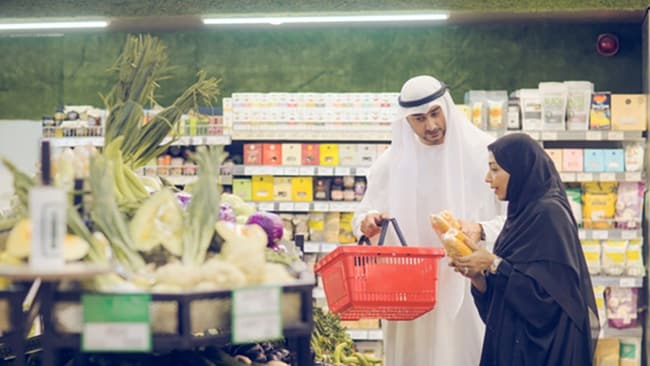When it comes to the supply chain, China is the big name that comes to mind. With a massive workforce and systems that are tried and tested, China has been a reliable source for supply chains worldwide for over 50 years. However, as other countries focus on their development and economic goals, potential has arisen for people to look to other countries as options and even overtake China as the biggest supply chain hub. India is one of the countries that has recently come into conversation as a potential outlier. With a workforce to match China’s political ambitions, we believe the country's potential is a possibility to explore what opportunities India has to take over the mantle and what barriers are in their way.
Opportunities for supply chain management in India
- In early 2024, India was reported to be the world's fastest-growing economy. The country is expected to have an 8.4% GDP growth using various strategic moves to keep the growth going - an effort that is recognised by big business players like Apple and Tesco moving their investment focus to India. There are numerous reasons why India was observed to have made such a leap with two of the biggest reasons being structural reforms and strategic economic moves such as global partnerships and policy changes. The Indian government has implemented several reforms to make the business environment more conducive to foreign investment. Policies like the Production Linked Incentive (PLI) scheme are aimed at boosting manufacturing and exports.
- The potential of a growing middle class. The middle class in India have been reported to be the fastest-growing demographic group with a 6.3% rise between 1995 and 2021. The middle class is estimated to represent 38% of the Indian population by 2031. This shift in demographics is the driving force of the economy leading to higher volume growth, an ever-growing demand from a pool of consumers, more competition and lower prices including a large working force at the ready empowered by education. Already India is leading when it comes to English-speaking STEM graduates and it’s estimated that 65% of the population is under 35 years of age.
- Strategic alliances. Along with Apple and Tesla who have moved their investment focus to India, Walmart and other large organizations have also changed their focus to India. In November 2023, Walmart was reported to have reduced its imports with China and upped its Indian partnerships. Reuters reported that Walmart was “Importing more goods to the United States from India and reducing its reliance upon China as it looks to cut costs and diversify its supply chain.” Walmart has had a significant interest in India proven by the $3.5B investment towards their stake in Flipkart showcasing their support and goals in India. The telecommunications firm Cisco has also made the decision recently to start manufacturing in India stating that “Fueled by a rapidly developing digital economy, India is a focal point of innovation and business for Cisco.&rdquo
- Independence and influence. Unlike China and Vietnam, India is not dependent on other countries for its manufacturing goals. Vietnam resources most materials from China and is used as a primary assembling hub, while for India, most of the raw materials needed are made there and are easily accessible. The Make in India initiative that was introduced in 2014 has focused on boosting the country's manufacturing capabilities including electronics, pharmaceuticals, and textiles. India is also strategically located making it an ideal spot for global trade routes.
Barriers for supply chain management in India
- Don’t forget Vietnam. According to this CNBC article, China is not the only country standing in the way of India becoming the leading source of all supply chains - Vietnam has been a consistent player, especially in the technology and garment manufacturing space, owing to the lower costs, workforce and reduced red tape. Other than middle range to smaller organizations preferring to work with tried and tested methods, India also has the barrier of being larger than Vietnam which means more states with different policies that need to be navigated as well as higher taxes. “One hurdle for India’s manufacturing hub ambitions is the country’s 10% import duty for information and communication technologies,” reports CNBC, “This is higher than Vietnam’s average import duties of around 5%.”
- Infrastructure. While India is making significant strides with its technology and infrastructure, there is still a way to go with key challenges for the supply chain being safe dispatch, smoother roads and efficient timings, all of which still stand as a concern. With these barriers and delays, transit costs tend to increase. According to this Forbes article, the Indian government is planning to invest significant money into developing stronger and more efficient infrastructure and technology systems but it is unclear when these will come into effect and whether the Indian workforce will be ready to meet the demand when it does. India also faces challenges with reliable energy supply, which is crucial for manufacturing and other supply chain activities. Consistent power outages are known to disrupt operations which leads to a domino effect of delays that affect processing and deliveries.
- A long way to reach China. Economic analysts Morgan Stanley recently expressed their doubt about India achieving the steady 8% to 10% long-term growth that China has managed to reach. While they remain optimistic about the potential, concern lies in the readiness of the infrastructure in the country. China is still leading in technology production with the country now stepping into developing technology to mitigate greenhouse gas emissions which has become an ever-increasing need for other countries. With stable manufacturing hubs, an efficient infrastructure system and a government that is keen to develop new approaches, India still has a long way to go.
India economy growth - how does the future look?
When looking ahead however, it looks like the goal for India isn’t to match China but to stand on its own as an option for global organizations, being a country known for its standard of excellence. India’s goal is to be more than just an option. The current government has made clear that while being the new supply chain leader for the globe is significant, the end goal remains to make India a fully developed economy by 2047. India’s strategic moves mean a few things for the supply chain: The more options, the better. The supply chain link can consider their options leading to more efficient supply, delivery, and a happy consumer at the end of it all. With countries like India stepping up, the potential for diversification is becoming clearer every day and what this means for the supply chain remains exciting.
您是否想隨時獲取未來產業趨勢的必修課?
您完成了,歡迎訂閱!
很抱歉,發送您的聯絡請求時發生問題。
請檢視表單欄位,並確保提供所有必要的正確資訊。若問題仍然存在,請聯絡我們的支援團隊尋求進一步協助。
您是否想隨時獲取未來產業趨勢的必修課?
透過在此表單註冊,您可直接在您的郵箱中接收我們的見解,踏入真正整合物流的世界。只要按幾下,您就可從我們為您量身訂製的文章中獲取靈感,並獲得相關業務見解。您可以隨時取消訂閱。
I agree to receive logistics related news and marketing updates by email, phone, messaging services (e.g. WhatsApp) and other digital platforms, including but not limited to social media (e.g., LinkedIn) from A. P. Moller-Maersk and its affiliated companies (see latest company overview). I understand that I can opt out of such Maersk communications at any time by clicking the unsubscribe link. To see how we use your personal data, please read our Privacy Notification.
By completing this form, you confirm that you agree to the use of your personal data by Maersk as described in our Privacy Notification.













